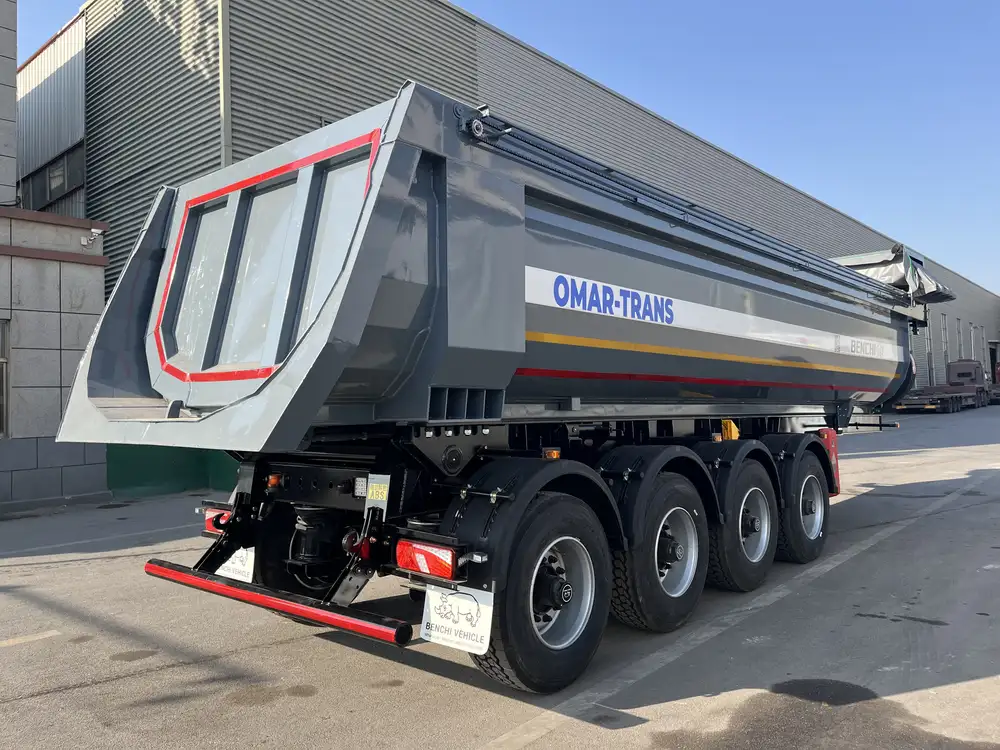In the world of logistics and transportation, understanding semi-trailer dimensions, particularly their length, is critical for compliance with various regulations, safety, and operational efficiency. This article delves deeply into the factors influencing the allowable lengths of semi-trailers, regulations set by different jurisdictions, and practical insights into maximizing truck space while adhering to legal limits.
Table of Contents
- Introduction to Semi-Trailer Length
- Federal Regulations on Semi-Trailer Length
- 2.1. Length Specifications
- 2.2. Semi-Trailer Combinations
- State-Specific Regulations
- 3.1. Variations Across States
- 3.2. Interstate vs. Intrastate Transport
- Types of Semi-Trailers and Their Optimal Lengths
- 4.1. Flatbed Trailers
- 4.2. Refrigerated Trailers
- 4.3. Dry Van Trailers
- 4.4. Specialty Trailers
- Importance of Compliance
- Strategies for Optimizing Load Capacity
- Conclusion
1. Introduction to Semi-Trailer Length
In essence, semi-trailers are critical components of the freight industry, serving as the primary method of transporting goods across vast distances. Their length directly affects how much cargo they can carry, influencing shipping costs, delivery schedules, and overall logistics operations. Therefore, knowing how long a semi-trailer can be is vital for manufacturers, transporters, and businesses alike.

2. Federal Regulations on Semi-Trailer Length
2.1. Length Specifications
At the federal level, the primary governing body overseeing semi-trailer length is the Federal Motor Carrier Safety Administration (FMCSA). According to FMCSA regulations:
- Standard Length: A semi-trailer with a standard length can measure up to 53 feet.
- Maximum Length: A combined vehicle length (tractor and trailer) typically cannot exceed 65 feet.
2.2. Semi-Trailer Combinations
Understanding the various configurations of semi-trailer combinations can clarify length regulations further. The most common configurations include:
| Configuration Type | Maximum Length (ft) | Description |
|---|---|---|
| Straight Truck | 40 to 45 | A truck with a fixed cab and cargo area. |
| Semi-Trailer | 53 | Standard semi-trailer length. |
| Double Trailer | 61 to 65 | Comprises two trailers hitched together. |
| Triple Trailer | 75 to 80 | Includes a tractor and three trailers. |
These configurations are crucial for fleets to consider for various freight applications.

3. State-Specific Regulations
While federal regulations set the baseline, each state has the authority to impose its own rules regarding semi-trailer length. This may lead to variations that industry professionals must navigate diligently.
3.1. Variations Across States
Several states impose stricter regulations than federal guidelines. For example:
| State | Maximum Length (ft) | Special Considerations |
|---|---|---|
| California | 40 (single) | Strict enforcement; variations for specific trailers. |
| Texas | 65 | Generous allowances; popular for larger fleets. |
| Florida | 53 | Additional restrictions in urban areas. |
3.2. Interstate vs. Intrastate Transport
The distinction between interstate and intrastate transport can complicate length regulations. When transporting goods across state lines, federal regulations apply. Conversely, within state lines, companies must adhere to specific state regulations, which can sometimes differ significantly.

4. Types of Semi-Trailers and Their Optimal Lengths
Different types of semi-trailers are designed for specific types of cargo. Each of these includes optimal length considerations based on cargo type and legal specifications.
4.1. Flatbed Trailers
Flatbed trailers are versatile and generally measure up to 48 to 53 feet in length, depending on the load requirements. These trailers are ideal for transporting oversized loads that may not fit within enclosed spaces.
4.2. Refrigerated Trailers
Refrigerated trailers, or reefer trailers, are typically 53 feet long, accommodating temperature-sensitive goods. The design ensures maximum utilization of cargo space while adhering to length limits.

4.3. Dry Van Trailers
Similar to reefer trailers, dry van trailers usually measure 53 feet, designed to carry non-perishable items. They are constructed to provide a secure environment for goods while optimizing aerodynamics and fuel efficiency.
4.4. Specialty Trailers
Specialty trailers, such as drop-deck or lowboy trailers, vary in length. While lowboy trailers can exceed the traditional lengths (up to 60 or even 70 feet), they are subject to specific state rules due to the nature of the cargo they transport (like heavy machinery).
5. Importance of Compliance
Adhering to length regulations not only ensures legal compliance but also maximizes operational safety. Noncompliance can lead to serious repercussions, including:
- Fines: Weight and size violations often incur hefty fines.
- Traffic Delays: Overly long trailers might require special permits, leading to additional delays.
- Insurance Complications: Noncompliance may create issues with insurance claims or coverage.

6. Strategies for Optimizing Load Capacity
To maximize load capacity while adhering to legal dimensions, manufacturers and transporters can adopt several strategies:
- Efficient Loading: Utilizing space-saving techniques can optimize cargo distribution within the permissible length.
- Choosing the Right Trailer Type: Selecting a trailer type that best meets the load requirements can enhance capacity without exceeding limits.
- Regular Training for Drivers: Educating drivers on the impacts of weight distribution and load placement can improve safety and compliance.
6.1. Comparison of Trailer Lengths and Capacities
| Trailer Type | Standard Length (ft) | Loading Capacity (lbs) |
|---|---|---|
| Flatbed | 48 – 53 | 48,000 – 50,000 |
| Refrigerated | 53 | 45,000 |
| Dry Van | 53 | 45,000 |
| Lowboy | 60 | 40,000 (varies broadly) |
It’s essential to consider these dimensions when planning logistics and selecting trailers for specific hauls.
7. Conclusion
In summary, understanding how long a semi-trailer can be is essential for efficient trucking operations, regulatory compliance, and maximizing profit margins. As the logistics industry continues to evolve, so will the regulations surrounding semi-trailer dimensions. Manufacturers and transporters must stay informed about both federal and state laws to ensure they remain compliant while optimizing their operations. By considering various trailer types, adhering to length regulations, and implementing strategic loading practices, companies can enhance their transportation effectiveness and reduce operational risks.
In the intricate tapestry of logistics, the length of semi-trailers is just one thread, but it is undoubtedly a crucial one that, when managed wisely, can significantly impact a company’s bottom line.



